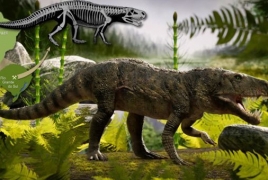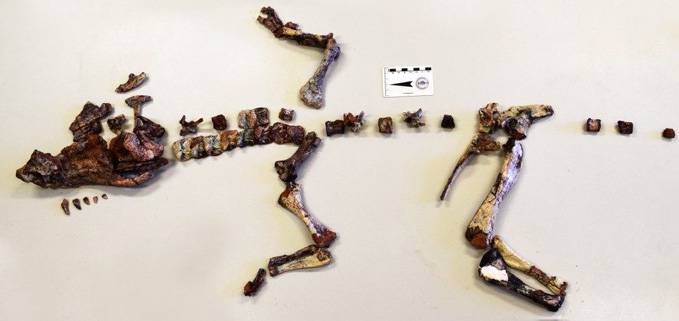
Rodrigo Müller was working a block of rock and dirt at the base of Agudo Hill, an hour from Porto Alegre, when he first saw an unusual set of osteoderms, bony deposits that form plates on the skin of a reptile or amphibian.
“It was a surprise, because we had never seen anything like this in Brazil before,” Müller, a palaeontologist at the Federal University of Santa Maria, says of what was otherwise an ordinary visit to the Janner dig site, once home to some of the earliest dinosaurs to roam Earth.
As he continued his delicate work, he brushed dirt from an intact cranium and several other fossilised bones. Together, the collection formed a well-preserved and almost complete skeleton of a rare Ornithosuchidae reptile, a family considered cousins to today’s crocodiles and alligators that had been previously recorded only in Argentina and Scotland, National Geographic says.

Dated to 230 million years ago, Dynamosuchus collisensis—newly named for its powerful bite and the location of the find—was described January 31 in the journal Acta Palaeontologica Polonica by a team that includes Müller’s colleagues at Argentina’s Museo de La Plata and Virginia Tech in the United States. Only three other species of Ornithosuchid have been discovered in the world, the last of which was found in Argentina and described 50 years ago.
While its bite could crush bones and its blade-like teeth tore through meat, Müller and company believe Dynamosuchus collisensis was a slow scavenger, or necrophagous, similar to the vultures and hyenas of today. It fed mostly off animal carcasses and easy-to-catch prey, meaning it filled a crucial part of the food chain that palaeontologists hadn’t known existed in this region of Brazil until now.
“It helps us understand better how that ecosystem worked,” Müller says.

